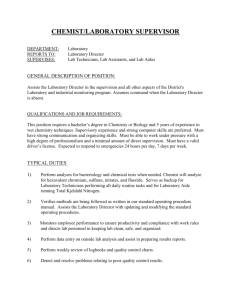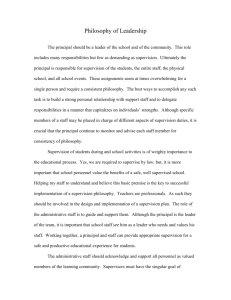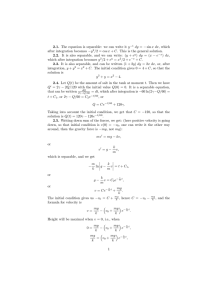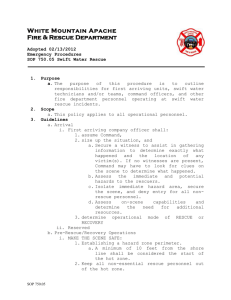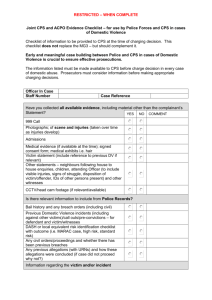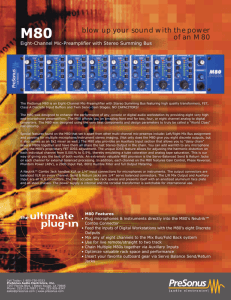RISK ANALYSIS AND MANAGEMENT SYSTEM
advertisement
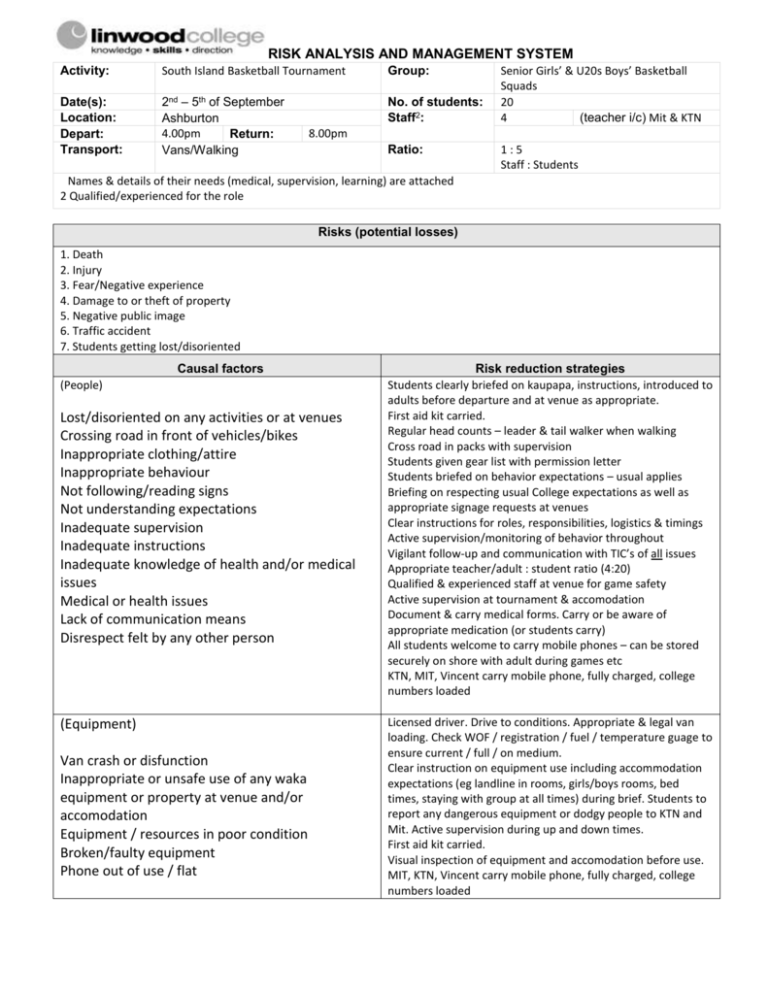
RISK ANALYSIS AND MANAGEMENT SYSTEM Activity: South Island Basketball Tournament Group: Date(s): Location: Depart: Transport: 2nd – 5th of September Ashburton 4.00pm Return: Vans/Walking No. of students: Staff2: Senior Girls’ & U20s Boys’ Basketball Squads 20 4 (teacher i/c) Mit & KTN 8.00pm Ratio: 1:5 Staff : Students Names & details of their needs (medical, supervision, learning) are attached 2 Qualified/experienced for the role Risks (potential losses) 1. Death 2. Injury 3. Fear/Negative experience 4. Damage to or theft of property 5. Negative public image 6. Traffic accident 7. Students getting lost/disoriented Causal factors (People) Lost/disoriented on any activities or at venues Crossing road in front of vehicles/bikes Inappropriate clothing/attire Inappropriate behaviour Not following/reading signs Not understanding expectations Inadequate supervision Inadequate instructions Inadequate knowledge of health and/or medical issues Medical or health issues Lack of communication means Disrespect felt by any other person (Equipment) Van crash or disfunction Inappropriate or unsafe use of any waka equipment or property at venue and/or accomodation Equipment / resources in poor condition Broken/faulty equipment Phone out of use / flat Risk reduction strategies Students clearly briefed on kaupapa, instructions, introduced to adults before departure and at venue as appropriate. First aid kit carried. Regular head counts – leader & tail walker when walking Cross road in packs with supervision Students given gear list with permission letter Students briefed on behavior expectations – usual applies Briefing on respecting usual College expectations as well as appropriate signage requests at venues Clear instructions for roles, responsibilities, logistics & timings Active supervision/monitoring of behavior throughout Vigilant follow-up and communication with TIC’s of all issues Appropriate teacher/adult : student ratio (4:20) Qualified & experienced staff at venue for game safety Active supervision at tournament & accomodation Document & carry medical forms. Carry or be aware of appropriate medication (or students carry) All students welcome to carry mobile phones – can be stored securely on shore with adult during games etc KTN, MIT, Vincent carry mobile phone, fully charged, college numbers loaded Licensed driver. Drive to conditions. Appropriate & legal van loading. Check WOF / registration / fuel / temperature guage to ensure current / full / on medium. Clear instruction on equipment use including accommodation expectations (eg landline in rooms, girls/boys rooms, bed times, staying with group at all times) during brief. Students to report any dangerous equipment or dodgy people to KTN and Mit. Active supervision during up and down times. First aid kit carried. Visual inspection of equipment and accomodation before use. MIT, KTN, Vincent carry mobile phone, fully charged, college numbers loaded (Environment) Cold weather and/or rain Hit by vehicles or bikes on walk Approached by dogs on walk Cold at site Mocking or social isolation in transit or at any sites Earthquake (richter 4+) Jacket/scarf/hat on gear list Walk on footpath strictly, cross in groups with supervision Brief about dogs included (not inciting any) – calm, ball, quiet, still. First aid kit carried. If student very cold, get them to dry & change, drying hair if possible. Discussion about social/emotional risks & respect for self & others included in brief. Importance of sticking with group at all times. Students have appropriate clothing to change into after basketball games (gear list). Cold students in van/shelter/accommodation with blankets & support person/people. Follow staff/adult instructions in severe earthquake. Support students to contact home immediately. Assess situation, go back to school as a group when appropriate. If anyone needs to go straight home, make contact with caregivers/parents to ok this first. Contact Principal. Emergency strategies Plans Contacts Equipment/Resources First Aid (DRABC) Rescue Evacuation Fatality Emergency 111 Police Linwood College 03 982 0100 Acting Principal Linda Tame 0272224798 Strahan McIntosh 0279606558 Rosanna Katene 0274651095 Vincent Lasei 0212614030 Blankets & spare towels First Aid kit Trip details Detailed contact lists Medical information Mobile phone – fully charged Mobile phone chargers Petrol cards & access codes to fill up Reviewed by: Date: EMERGENCY STRATEGIES First Aid Plan (DRABCS-fast, ACHIEVE-slow, WRAPT) 1. Approach the victim checking for Danger to you/group/patient and take charge of the situation 2. Check Responsiveness. Call out and talk to victim as you approach 3. Perform rapid initial assessment by checking: Airway, Breathing, Circulation, Severe bleeding 4. If necessary treat to stabilise victim: open the airway, commence rescue breathing/CPR, control bleeding 5. Perform thorough secondary assessment: Accident/illness details, Chief complaint/problem, History of medical details (Information gathering), Eat and drink- what and when, Vital signs, Examine- head to toe 6. Act on what you find to make the victim comfortable: Warmth, Reassurance, Assess again, Positioning, Treatment Rescue Plan- to rescue from further harm 1. Take charge and look after yourself and the group 2. Assess the victim and your options 3. Set up the site 4. Stabilise the victim if required 5. Move the victim Evacuation Plan- to move patient to other care 1. Assess patient mobility, personnel and equipment resources, and environmental conditions 2. If conditions are favourable prepare and assist patient to a pick-up point and/or medical care. Where patient transport is required this is best left to trained personnel. Contact Police for an evacuation. Inform Principal. In absence of means of communication send out a written message (with 2 people preferably). 3. Care for the patient and group 4. In event of a helicopter rescue, prepare the landing site, attract attention of the helicopter crew Fatality Plan 1. Stop the activity and look after group needs: shelter, fluids, food 2. Cover the body and create a no-go zone 3. Contact Police and Principal 4. Allow for grieving process 5. Principal talks to parents and media 6. Activate trauma plan Search Plan 1. Stop activity and manage group 2. Establish circumstances of loss (point last seen, state of mind/body) 3. Make initial contact with Police and Principal Depending on resources and conditions: 4. Check immediate area they were last seen 5. Undertake wider search 6. Evaluate, contact Police and Principal





